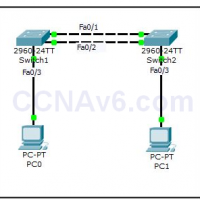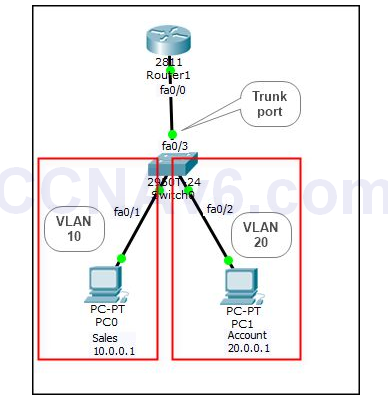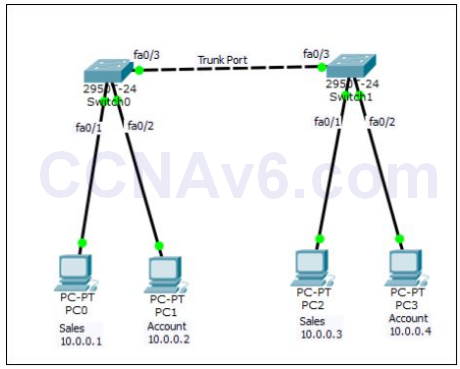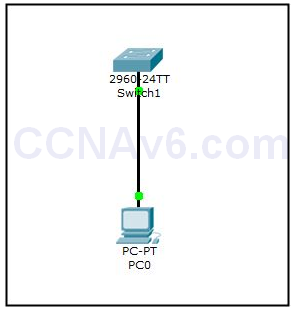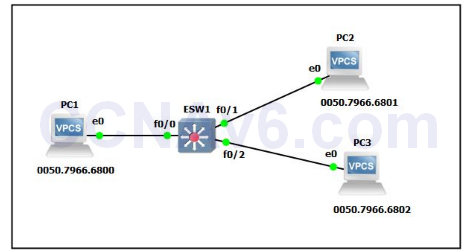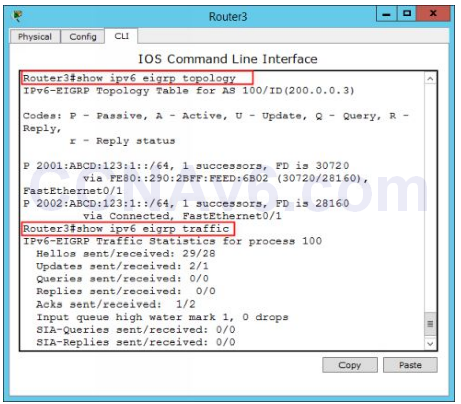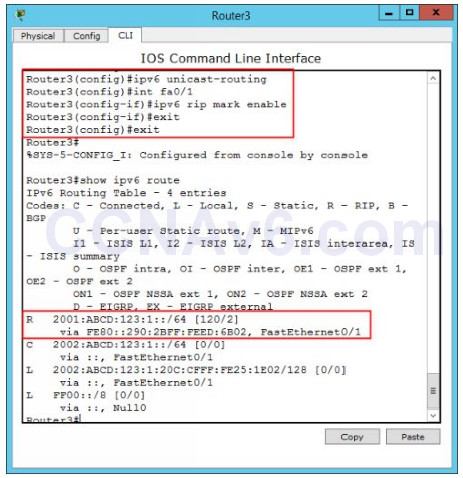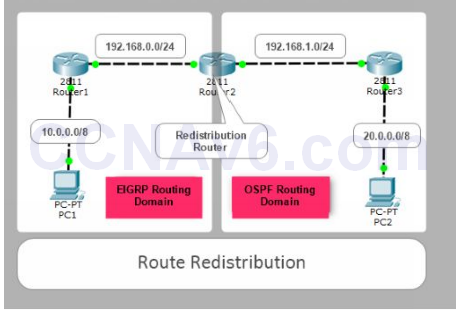Category: 120 Labs CCNA
120 Labs and solutions to give you the confidence and speed to pass the practical teste in your Cisco CCNA and CCENT exams: Exam CCNA 200-125, Exam ICND1 100-105, Exam ICND2 200-105
Etherchannel is a technique that allows you to combine multiple Ethernet switch ports in to a single logical port. Thus help you to combine bandwidth of all port and provide redundancy in case of a single port failure. This technique is also known as NIC Teaming, Link Aggregation, …
In the previous exercises, we have covered the basics of VLANs and its configuration. As discussed earlier, VLANs are used to separate network traffic, enhance network security, and divide a large network in to several small networks. We know that systems belong to one VLAN cannot communicate to …
Introduction to VLAN VLANs are used to segment a large physical LAN into multiple small virtual LANs for better management and greater security. VLANs provide a number advantages and features. Some of the key features provided by VLANs are: VLANs allow to add, move, and change networks with …
A device can be managed either locally or remotely. There are various protocols, tools, and services (such as Telnet, Secure Shell, and Putty) that are used to manager devices remotely. These tools are also referred as remote administration tools. We will use the following simple topology to configure …
We know that a switch has many advantages over a hub. One of the major reason behind switch’s popularity over hub is its Unicast transmission method. A Switch has ability to transmit a frame only to a device that deserve to receive it. For this, switch uses its …
DHCP stands for Dynamic Host Configuration Protocol. It is a service which allows you to configure TCP/ IP settings such as IP address and subnet mask on the clients (PC, laptop, printer, etc.) automatically. Typically, DHCP is configured on a dedicated server for better performance. The server can …
EIGRP for IPv6 or EIGRPv6 is the IPv6 compatible version of EIGRP routing protocol. The basic features of EIGRPv6 routing protocol remain same as EIGRP routing protocol. In order to configure EIGRP for IPv6, first of all, you should be familiar with the basics of EIGRP protocol. To …
Similar to IPv4 compatible routing protocol, there are also IPv6 compatible protocols such as RIPng and EIGRPv6. If your network is based on IPv6 addressing scheme, you have to configure an IPv6 Routing protocol to perform the routing functions. In this lab exercise, we will explain how to …
IPv6 is the next generation of IPv4 IP addressing scheme. IPv6 addressing supports more addresses and security features than IPv4 IP addressing scheme. Most of the people think that configuring IPv6 addresses is difficult than IPv4. However, trust me, once you become familiar with the IPv6 you will …
We will use the following topology to demonstrate how to perform redistribution between EIGRP and OSPF. We assume that all the devices have already configured with the appropriate IP addresses. 1. Once you have configure IP addresses, execute the following commands to configure EIGRP routing on Router1. Router1( …
